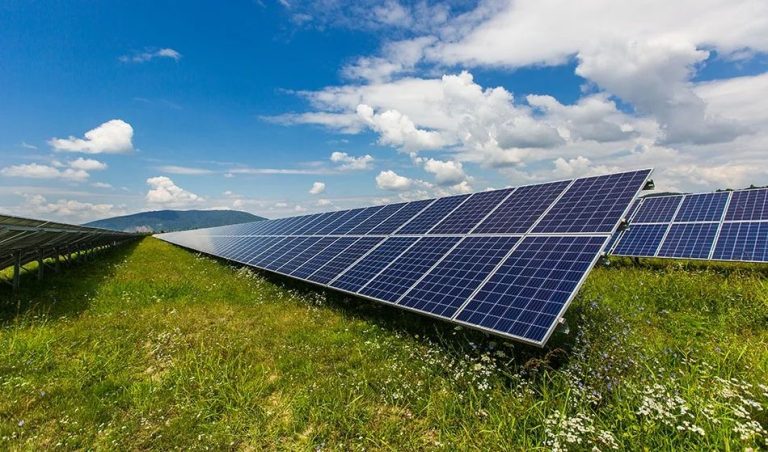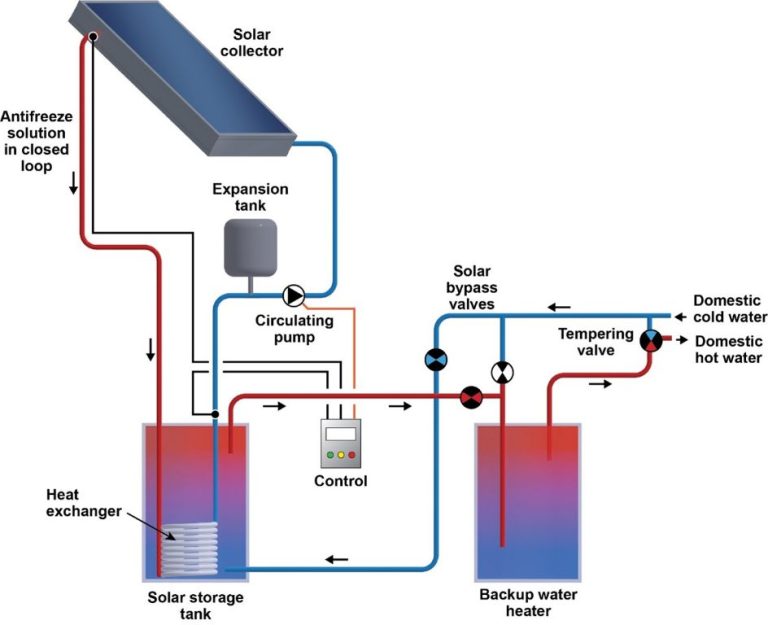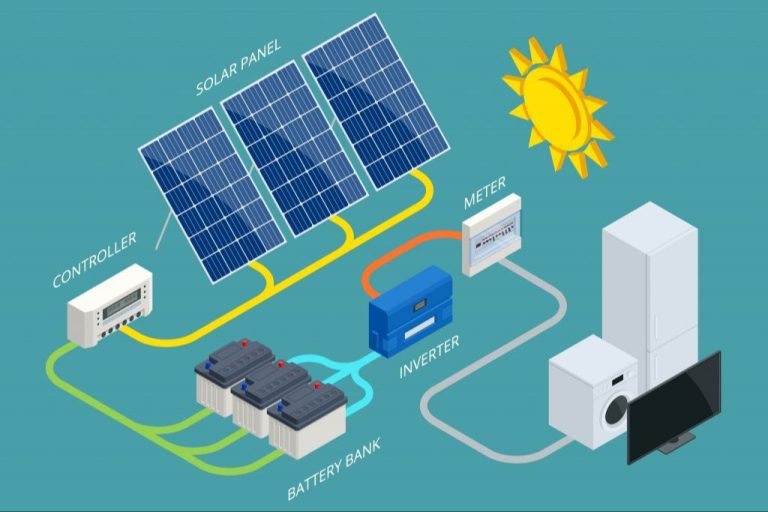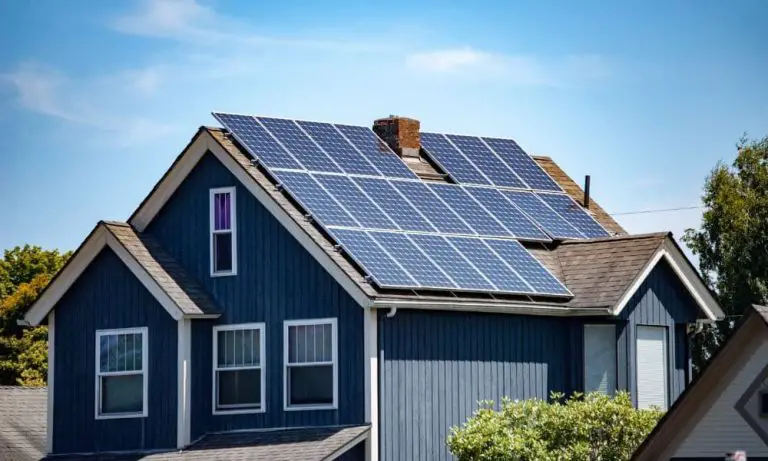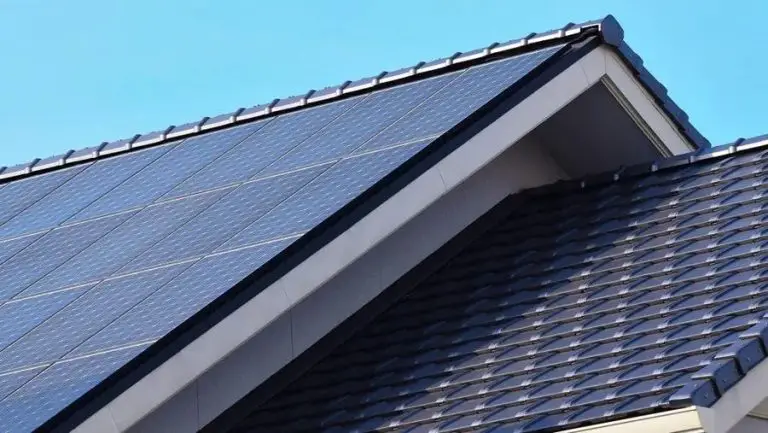What Process Captures Solar Energy?
Solar energy is the radiant light and heat that comes from the sun. It is a renewable energy source that can be captured and converted in various ways to provide electricity and heat. Capturing solar energy is important because the sun provides an enormous amount of energy that far exceeds our current energy needs. By tapping into this vast resource, we can generate clean power without emitting greenhouse gases or other pollutants.
The amount of solar energy that reaches the Earth’s surface in one hour is more than the entire world’s energy consumption for an entire year. Solar energy is free and abundant, making it one of the most promising renewable energy sources. Converting even a small fraction of solar energy to useful forms like electricity and heat could help meet rising energy demands while reducing reliance on finite fossil fuels that negatively impact the environment.
How Solar Panels Work
Solar panels work through the photovoltaic effect, which is a process that converts sunlight into electricity. Solar cells inside the panel are made up of semiconducting materials, usually silicon. When sunlight hits the solar cell, the photons from the sunlight knock electrons loose from the atoms in the semiconductor, allowing the electrons to flow through the material and produce an electric current. This process of converting light (photons) to electricity (voltage) is called the photovoltaic effect.
Specifically, here is what happens inside a solar panel:
- Photons from sunlight hit the solar cell and are absorbed by the semiconducting material, usually silicon.
- This energy from the photon knocks electrons loose in the semiconductor.
- The flow of loose electrons in the semiconductor is an electric current.
- Metal plates on the solar cell collect the electrons and transfer them to wires, generating electricity that can be used.
So in summary, solar panels can generate electricity from sunlight through semiconductors that exhibit the photovoltaic effect. When sunlight hits these materials, their electrons are knocked loose and can flow freely, generating an electrical current that powers our homes and businesses.
Types of Solar Panels
There are a few main types of solar panels used today:
Silicon Solar Cells
The most common type of solar cell is made from silicon. Monocrystalline silicon solar cells are cut from a single crystal of silicon and have the highest efficiency rates, usually around 15-20%. However, they are more expensive to produce than other types of silicon cells. Polycrystalline silicon cells are made from multiple crystals melted together and have slightly lower efficiency rates around 13-16%. But they are easier to make and less costly.
Thin Film Solar Cells
Thin film solar cells use very thin layers of photovoltaic materials deposited on glass, metal or plastic backing. Because of the thinness, they are flexible and lightweight. Thin film cells are typically less efficient, with rates of 7-13%, but their flexibility allows them to be integrated into building materials and used in innovative ways.
Organic PV Cells
A newer development is solar cells made from organic photovoltaic materials like plastics and dyes. These organic PV cells can be made very cheaply, but currently have low efficiency rates of 5-7%. However with improvements in organic chemistry and materials science, their efficiency is steadily increasing.
When deciding on a solar panel type, there are always tradeoffs between efficiency, cost and flexibility. Silicon cells are the most efficient but also the most rigid and costly. Thin films sacrifice some efficiency for flexible applications. And organic PVs are emerging as a very affordable option despite lower efficiency – for now.
Solar Thermal Collectors
Solar thermal collectors, also known as solar hot water panels, are devices that use the sun’s thermal energy to heat water or another fluid. Unlike solar photovoltaic panels that convert sunlight into electricity, solar thermal collectors focus sunlight to directly heat either water or a heat-transfer fluid like glycol or synthetic oil.
The heated water or fluid can then be used for a variety of applications that require hot water or heating. The most common uses are for heating swimming pools, domestic hot water supply, and space heating in both residential and commercial buildings. The heated fluid can also be used to create steam to drive a turbine to generate electricity.
Solar thermal collector systems contain a collector or absorber surface, usually made of metallic pipes or tubes coated with a dark absorptive material, that heats up when exposed to sunlight. This heat is transferred to water or the heat-transfer fluid passing through the pipes or tubes. The heated liquid is then either directly circulated or pumped to a storage tank for later use.
There are a few main types of solar thermal collectors:
- Flat plate collectors – Insulated weatherproof boxes containing a dark absorber plate
- Evacuated tube collectors – Parallel rows of transparent glass tubes, each containing an absorber tube
- Unglazed plastic collectors – Made of plastic rather than glass and used primarily for pool heating
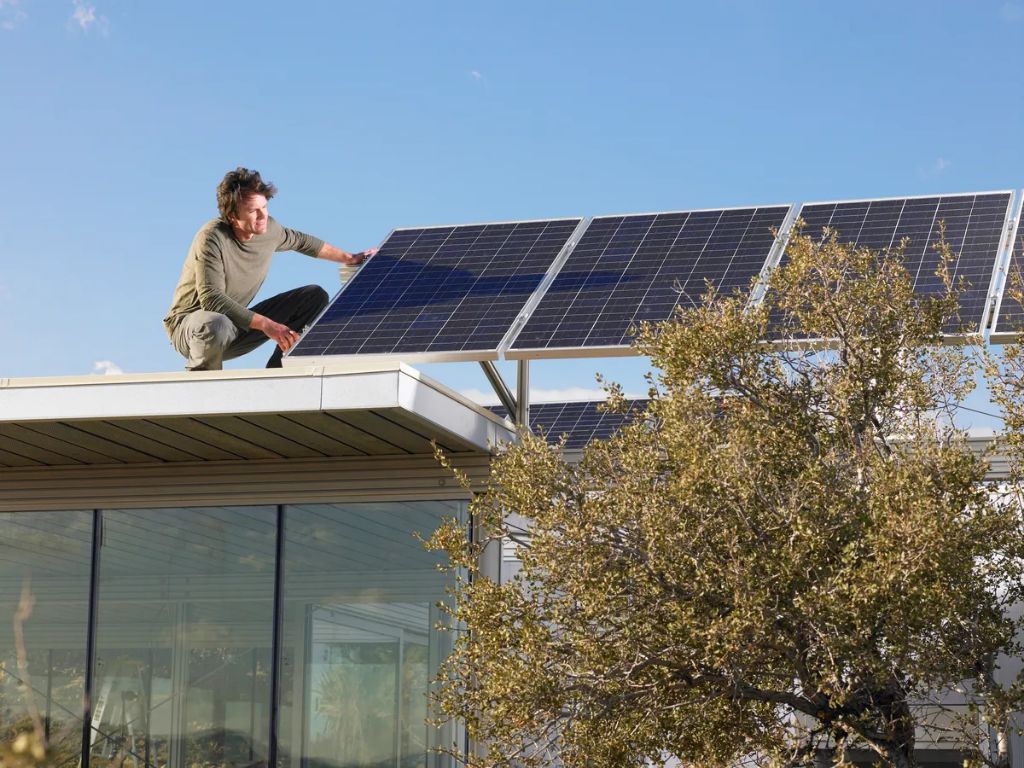
Solar thermal heating technologies are simple, reliable, and cost-effective ways to harness the sun’s thermal energy for water and space heating applications. While not used to generate electricity like solar PV systems, solar thermal collectors provide an efficient, environmentally-friendly solution for residential and commercial heating needs.
Concentrated Solar Power
Concentrated solar power (CSP), also known as concentrated solar thermal, generates electricity by using mirrors or lenses to concentrate the sun’s rays into a small area. The concentrated light is converted to heat, which drives a heat engine connected to an electrical power generator. CSP plants utilize various configurations, but they all rely on mirrors to focus sunlight onto a receiver.
The most common CSP technologies include:
- Parabolic trough systems – curved, U-shaped mirrors focus sunlight on a receiver tube running along the mirror’s focal point.
- Power tower systems – thousands of flat mirrors (heliostats) track the sun and reflect beams of light onto a central receiver on top of a tower.
- Parabolic dish systems – a parabolic dish of mirrors concentrates light onto a receiver at the focal point of the dish.
- Fresnel reflectors – flat or slightly curved mirrors focus light onto elevated receivers.
The concentrated sunlight heats up a thermal medium (oil, molten salt, water, etc.) in the receiver to high temperatures, often over 1000°F. The hot fluid then goes through a heat exchanger where it boils water to power a steam turbine generator. CSP using thermal storage can dispatch electricity even when the sun isn’t shining.
Storing Solar Energy
Once sunlight is converted into electricity, excess electricity can be stored for later use. This is important since solar energy generation depends on the sun shining. Storing solar energy helps maintain a steady supply of electricity even when the sun isn’t shining.
Batteries are one of the most common ways to store solar energy. When connected to a solar photovoltaic system, batteries store excess electricity generated during the day for use at night. Lithium-ion batteries have become popular for home solar energy storage given their high efficiency and lifespan compared to lead-acid batteries.
Thermal energy storage allows heat from the sun to be stored for later use. This approach is common with solar thermal collector systems which use the sun’s heat for water heating, space heating, or to drive a turbine to generate electricity. Excess heat can be stored in insulated tanks for use when needed.
Storing solar energy does come with challenges. Batteries can be expensive upfront. Thermal storage tanks need space. Overall capacity of storage systems may be insufficient for multiple overcast days. Maintaining stored energy also requires energy input. Nonetheless, storage enables solar energy to be used anytime and not just when the sun is shining.
Solar Installation
There are several ways solar energy systems can be installed to harness the power of the sun. The most common installations are rooftop solar panels on homes or businesses. Rooftop solar panels are typically mounted on racks that are attached to a building’s roof and angled to maximize sun exposure. The solar panels are wired into the building’s electrical system to provide electricity directly to the building or feed into the grid. Rooftop solar provides a decentralized way for buildings to generate their own renewable electricity.
At a larger scale, utility-scale solar farms consist of ground-mounted solar panel arrays. Solar farms can cover hundreds of acres and provide electricity to the utility grid rather than individual buildings or homes. The scale of solar farms allows them to produce large amounts of solar electricity at competitive prices. Solar farms are typically developed and owned by solar or utility companies.
Community solar is an emerging model that allows a community of people to share the costs and benefits of a solar installation. Community solar farms or arrays can provide options for people who want solar power but are unable to install it individually, such as renters and residents in multi-unit buildings. Participants subscribe to a portion of the community solar project and receive credits on their electricity bills based on the energy produced.
Floating solar arrays are an innovative approach where solar panels are mounted on structures that float on water reservoirs, ponds, or other bodies of water. This can help utilize available space on bodies of water near energy demand. The water also helps cool the solar panels, which increases their efficiency.
Efficiency and Optimization
There are several ways to maximize the efficiency and optimize solar panel systems to increase energy production.
Trackers
Solar trackers are devices that orient solar panels or mirrors to follow the sun throughout the day. By keeping panels aligned perpendicular to the sun’s rays, trackers maximize energy capture. Single-axis trackers tilt panels along one axis, typically north-south. More advanced dual-axis trackers pivot along two axes to directly face the sun at all times.
Clean Panels
Dirt, dust, pollen, and other debris accumulating on solar panels can block sunlight and reduce efficiency. Regularly cleaning solar panels helps optimize performance. Automated cleaning systems use brushing and water spraying to maintain clean panels with minimal effort.
Monitor Performance
Monitoring systems track and analyze energy production data to identify any problems. Performance metrics like yield and efficiency can pinpoint issues needing maintenance or replacement. Real-time monitoring also alerts to immediate problems like blown fuses or damaged wiring.
Maintenance
Proper maintenance keeps solar systems running efficiently. This includes checking electrical connections, replacing worn parts, monitoring for corrosion or leaks, and verifying mounts and structures are intact. Well-maintained systems tend to have higher output and fewer unexpected failures.
Solar Policy and Incentives
Solar energy is incentivized through policy initiatives that make it more affordable to install solar systems. The main incentives in the United States are the solar Investment Tax Credit (ITC), net metering policies, and renewable portfolio standards.
The federal solar ITC provides a 26% tax credit for systems installed in 2020-2022, and 22% after 2022. This significantly reduces the cost of solar by refunding over a quarter of system costs. Many states also offer additional tax credits and rebates.
Net metering allows solar panel owners to get credit for excess electricity they generate and send back to the grid. This rolls over month-to-month and offsets the cost of energy drawn from the grid when solar isn’t producing. Net metering makes solar more viable by ensuring system owners receive fair compensation.
Renewable portfolio standards are mandates that utilities source a certain percentage of their electricity from renewable sources. These create renewable energy demand and incentivize solar growth. 30 states currently have renewable portfolio standards, with goals ranging from 10-100% renewable energy by 2030-2050.
Policy initiatives like these lower costs and uncertainty for homeowners and businesses considering solar installations. They enable the solar industry to grow and become more competitive with fossil fuels. Supportive solar policy will continue to play a key role in solar energy adoption.
Future of Solar
The future looks bright for solar power. As technology continues to improve, solar is becoming more efficient and cost-effective every year. Several key trends are driving growth in the solar industry:
Improving technology – Researchers are making advances in solar cell materials, manufacturing processes and panel designs to increase efficiency and lower costs. Perovskite solar cells, organic solar cells and quantum dot solar cells are emerging technologies that could potentially achieve higher efficiencies than traditional silicon solar panels.
Growth projections – Solar power capacity is expected to grow exponentially in the coming decades. The International Energy Agency predicts global solar capacity will quadruple between 2019 and 2040 under current energy policies. With supportive policies and investments, solar could grow even faster.
Benefits – As solar power scales up, the benefits in terms of clean energy, cost savings, grid resilience, health and climate change mitigation will continue growing. Widespread adoption of solar supports energy independence, sustainability and a transition away from fossil fuels.
With solar costs falling combined with global demand for clean energy, the solar industry is poised for massive expansion. Innovation and supportive policies can help solar power realize its vast potential as a mainstream energy source of the future.

